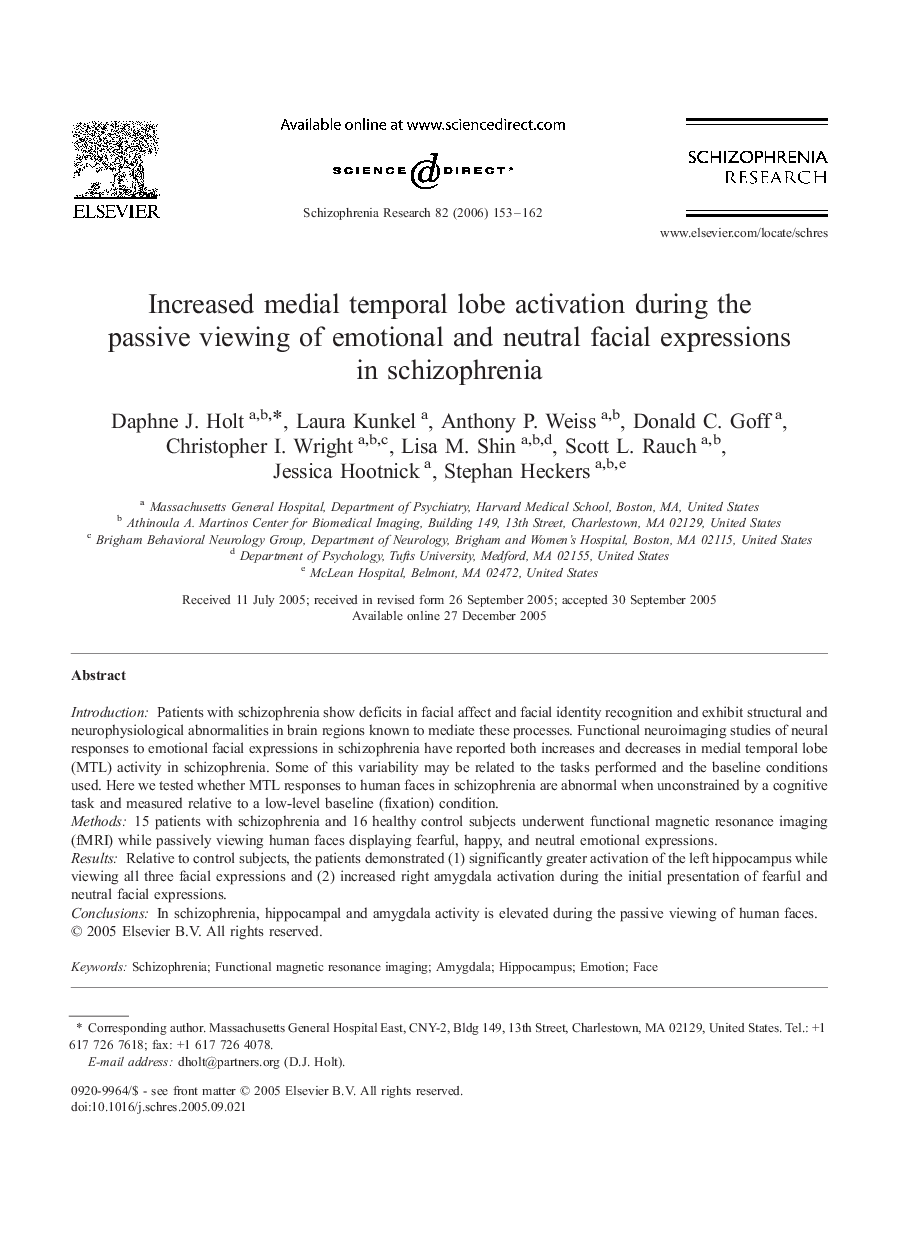| Article ID | Journal | Published Year | Pages | File Type |
|---|---|---|---|---|
| 338947 | Schizophrenia Research | 2006 | 10 Pages |
IntroductionPatients with schizophrenia show deficits in facial affect and facial identity recognition and exhibit structural and neurophysiological abnormalities in brain regions known to mediate these processes. Functional neuroimaging studies of neural responses to emotional facial expressions in schizophrenia have reported both increases and decreases in medial temporal lobe (MTL) activity in schizophrenia. Some of this variability may be related to the tasks performed and the baseline conditions used. Here we tested whether MTL responses to human faces in schizophrenia are abnormal when unconstrained by a cognitive task and measured relative to a low-level baseline (fixation) condition.Methods15 patients with schizophrenia and 16 healthy control subjects underwent functional magnetic resonance imaging (fMRI) while passively viewing human faces displaying fearful, happy, and neutral emotional expressions.ResultsRelative to control subjects, the patients demonstrated (1) significantly greater activation of the left hippocampus while viewing all three facial expressions and (2) increased right amygdala activation during the initial presentation of fearful and neutral facial expressions.ConclusionsIn schizophrenia, hippocampal and amygdala activity is elevated during the passive viewing of human faces.
